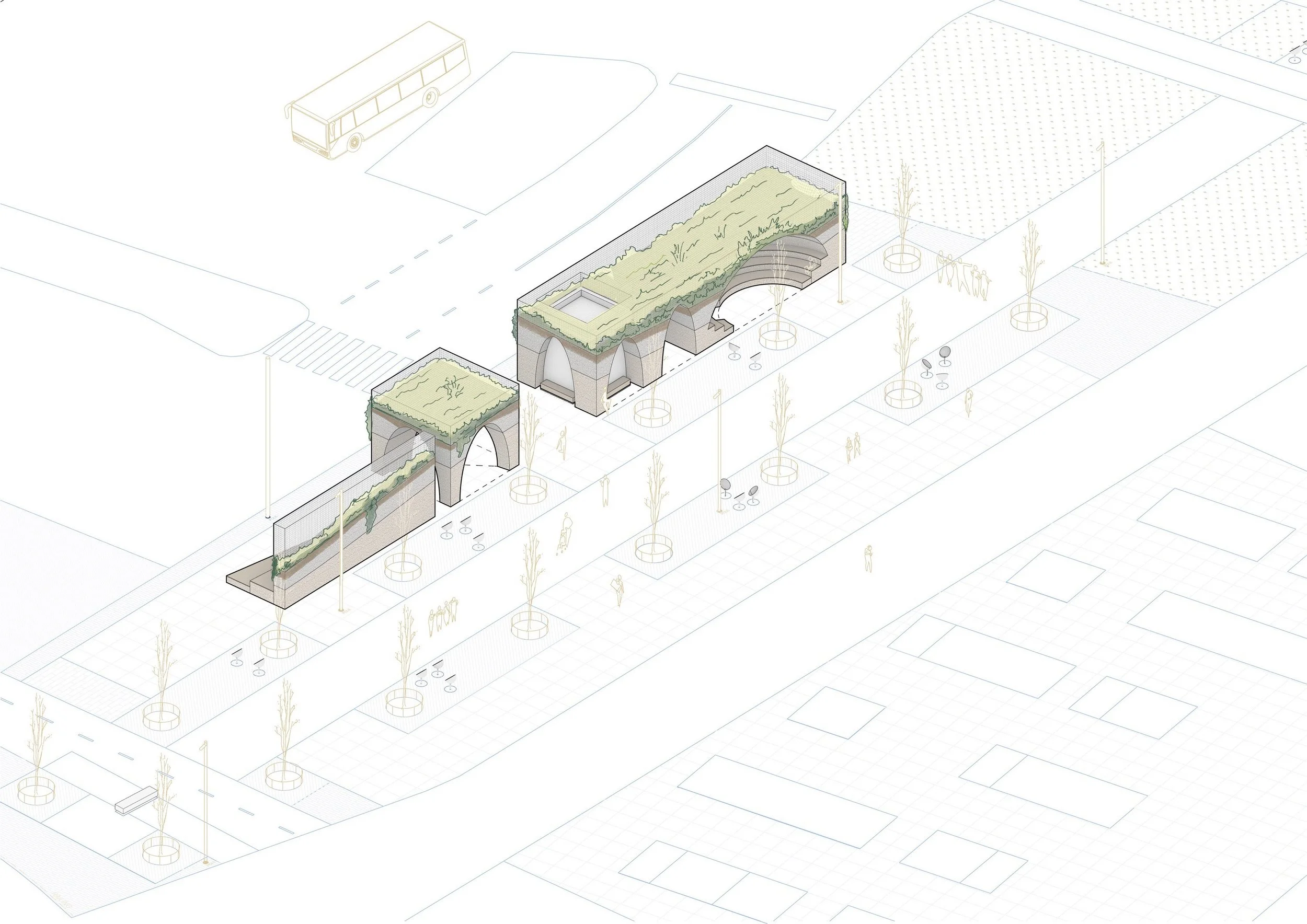Decentering Material Extraction:
Oil Shale and Sedimentary Capitalist Ruins
2023 Tallinn Biennial Entry.
Decentering Material Extraction explores the intersection of energy, ecology, and design within Estonia's context of oil shale mining—a major contributor to environmental degradation. By engaging with the materiality of oil shale, the project challenges its traditional role as an energy source and reimagines its potential within regenerative and circular practices. The installation, created for the Tallinn Architecture Biennale, uses gabion walls to host shale rocks, peat, and organic matter, creating a dynamic ecosystem where human and non-human entities cohabitate.
This performative pavilion operates in two phases. Initially, it assembles geological strata to expose the biomes that thrive within Estonia’s landscapes. Over time, natural decay and growth processes transform the structure, with flora and fauna altering its composition. Following the Biennale, the pavilion will disperse into urban furniture, extending its lifecycle and fostering new uses.
Rooted in the critical discourse of energy dependencies, the project critiques extractive industries and their role in global crises. Planning to hosts public programs featuring environmental experts, activists, and designers, creating a platform for dialogue.
By reframing oil shale as a resource for symbiotic relationships rather than exploitation, the pavilion redefines architecture’s role in addressing climate challenges. It prompts visitors to rethink human and ecological interconnections, embracing design as a tool for envisioning equitable and sustainable futures.






